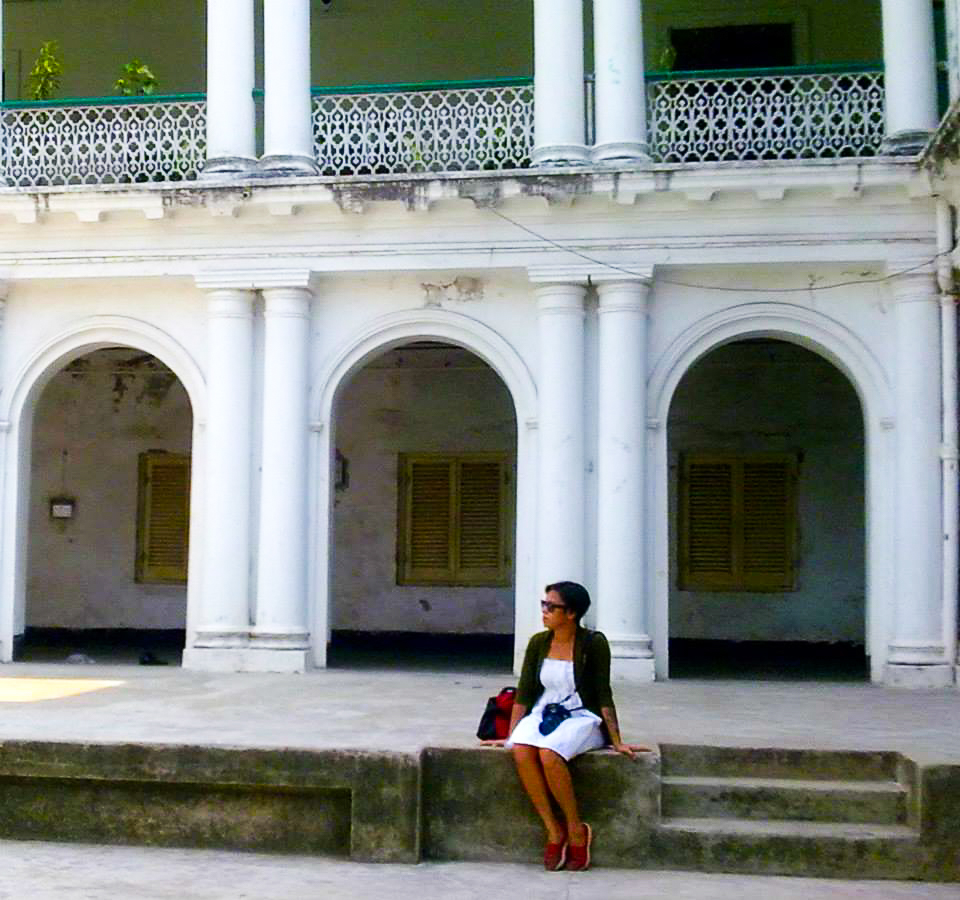According to the dictionary, a Rajbari is a mansion or a palace that was built as a residence for a Hindu rajah. These are found in India and Bangladesh. Recently, there has been a growing trend of Rajbari heritage stays. It entails a stay at one of the sumptuous and beautifully restored rajabaris that lie scattered in and around Kolkata, enjoying the idyllic countryside, and getting an idea of the lifestyle of erstwhile moneyed ´´zamindars´´ (landowners or minor rajahs). I love this concept because not only does it breathe a fresh lease of life into the crumbling grand mansions, but it also showcases the fine nuances of the Bengali lifestyle. Nearly every erstwhile zamindar (landed gentry) family had their own ´´family´´ traditions and these are often explained to the guests with much pride. Food is served on traditional brass plates and ´´shandha aarti´´ – blowing of conch shells and lighting up of a lamp herald evenings here. Nights are velvety with just the sounds of the fruits plopping on ponds or night birds and the best part is that these rajbaris are nearly just a few hours away from the chaotic Calcutta.
Table of Contents
Rajbaris evoke a bygone era
Until now, I have just stayed at Amadpur Rajbari and have seen some of them during Durga Puja. These grand mansions seem to defy time to me. Their colonnaded verandahs, ceremonial inner courtyards (thakurdalan), tinkling chandeliers (jharbati), massive mahogany four-postered beds in ladies´ quarters (andarmahal), marble statues, grand arches, and beautiful lattice iron-work evoke an era of slow gentility – an era of mustachioed starch dhoti-clad Zamindars and their doe-eyed brides in red and white sarees and big vermillion bindis. I can almost imagine their red alta-patterned feet going through the stairs and the jingle of their bangles as they peeped through the large windows.

An inner courtyard
Rajbaris ruins to riches story
These rajbaris were once the residences of the zamindars – the landed gentry of Bengal, during the days of the British Raj. Zamindari was abolished when the British left India and many of these erstwhile grandfamilies fell into strained financial circumstances. They no longer had the source of income required to maintain such huge mansions and as a result, most of these grand buildings fell in decrepitude. A particular scene in Satyajit Ray’s 1958 film Jalsaghar captures this pathos aptly. It shows Bishwamber Roy, the film´s aged, reclusive protagonist selling his last piece of family heirloom jewellery to organize one final soiree in his jalsaghar (music room). He stands alone on the terrace of his crumbling mansion rigid in his decision and refusal to accept the winds of change even as his family legacy disintegrates around him. The scene captures the decline of Bengal’s zamindars in the post-colonial times and this was the case with most rajbaris until the recent revival as heritage stays brought them back to life.
A heritage stay
In Kolkata (Calcutta) although the family-occupied rajbaris like the 250-year-old Shovabazar Rajbari are still closed to the public, many others have been lovingly restored to their former glory. As mentioned before, I have not stayed at a rajbari except at Amadpur and this is a photo essay of some of rajbaris in Kolkata. Take a look at their vintage loveliness and the common man´s life as he goes about his way in the City of Joy. To enjoy a slice of timeless royal life, choose to stay at any of the rajbaris mentioned in this list.


















Follow the rest of the West Bengal series
- PHOTO ESSAY OF BALI ISLAND IN THE SUNDERBANS
- SUNDERBANS TRAVEL INFO
- SUNDERBAN DELTA, A NATURE HUMAN CONFLICT AND TIGER WIDOWS
- SUNDERBANS TRIP PHOTO ESSAY
- KOLKATA FUN FACTS
- GROWING UP IN JHARGRAM
- KALIMPONG SLOW TRAVEL
- POSTCARDS FROM FROM OUR DARJEELING TRIP
- SPRING IN PURULIA
- AMADPUR RAJBARI STAY
RESPONSIBLE TRAVELING-BECAUSE I CARE

